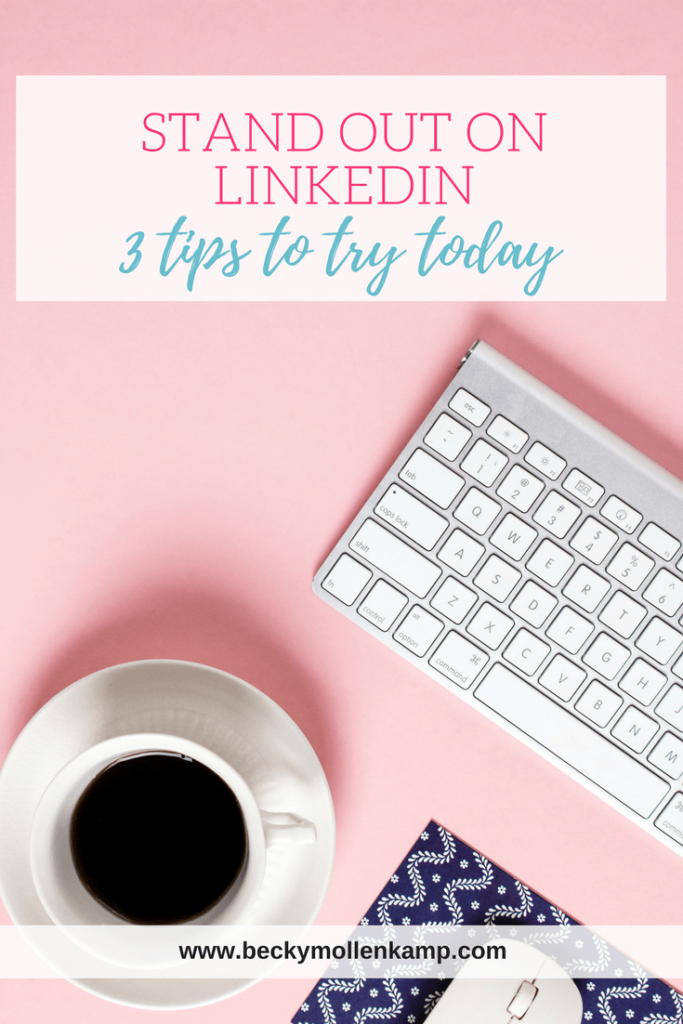Since leaving my 9-to-5 job in 2005, I’ve been running a profitable, sustainable business as a creative. As you know, that’s not easy to do. And you know what’s been the No. 1 reason for my success? For helping me find high-paying clients with very little effort? LinkedIn.
That’s right. That boring social site most of us ignore has been responsible for half or more of my income year after year. Best of all, the kinds of clients that come from LinkedIn are typically the ones who have big budgets, are used to spending money, who pay on time, and are open to repeat and retainer work.
No, LinkedIn isn’t as fun as Instagram, but it can change your business if you’re willing to invest the time into using it correctly.
Like any other tool, LinkedIn only works if you work it. It’s not a magic pill. You can’t just create a profile today and suddenly get $10,000 retainer clients tomorrow. It takes an investment of time. But for those who put in the effort, the rewards can be amazing.
Hopefully, I have you interested in learning more. If so, here are three ways to better use LinkedIn to grow your small business.
1. Optimize Your Bio
Why do I have so much success with LinkedIn while others don’t? It’s because I have a strategy in place for the platform. Using the site haphazardly won’t deliver results, at least not repeatable ones.
Having a plan for LinkedIn starts with a keyword strategy. How would you ideal client search for someone who does what you do? What words or phrases would they search?
You may have already gone through this exercise when creating an SEO strategy for your website. That’s great! Just know that you may need to tweak it slightly for LinkedIn, which may have a slightly different audience with different expectations (remember, when people are on LinkedIn they are wearing their professional hats, not their personal ones).
Write down 5 to 10 keywords and phrases you want to target for LinkedIn, and then pepper those throughout your profile. Everywhere you have an opportunity to change the language of your profile on LinkedIn, start incorporating these words and phrases.
LinkedIn is its own search engine and uses its own algorithm to determine whose names it will return in a search. One deciding factor is keyword density. How many times does “graphic designer,” as an example, show up in a profile?
The point isn’t to do “keyword stuffing” Not only does it not boost your name in a search, it will make your profile look ridiculous if someone sees the word “designer” 1,000 times in your short profile. The goal is to use the words naturally throughout your summary, education, experience, and in the content you share (more on that next).
Finally, please note that while keywords are important, they aren’t the only determinant in LinkedIn’s algorithm. Other things that also factor into how often you show up in results include how many connections you have and how active you are on the site.
2. Share Content
As I just mentioned, one of the ways you show up more often in LinkedIn search results is by being active on the site. Like all social media sites, LinkedIn rewards its more active users by making them more visible.
How can you be active? One of the best ways to engage with LinkedIn is by sharing content. There are two primary ways to do this.
- Status updates: Just like you’re used to doing on Facebook, you can share a quick update on LinkedIn. This can be a tip, a question, a quote, a link to a useful article, or sharing your own content. Remember to follow the 80/20 rule. Only a small portion of what you share should be your own material or promotions. Status updates on LinkedIn are short and easy to write. I recommend doing two updates a day (and no more than four). You can use a scheduling tool like Hootsuite or SmarterQueue to plan out a month’s worth of content in an hour or less. Status updates get your name showing up in your connection’s feeds. Even better, if they like it then it shows up in all of their connections’ feeds. Its a quick way to extend your reach on the site.
- Original articles: LinkedIn has its own publishing platform (called Pulse) where you can write articles. It’s basically microblogging. Share original content here, and don’t stress too much about it. A 500-word piece is fairly common on LinkedIn and that shouldn’t take you too long to create. A warning against copying your blog posts: Google loves to ding anyone who copies content across platforms (the prefer original content for various sites). If you don’t want to hurt your SEO, tweak what you’ve written so it’s different enough to not look like a cut-and-paste job. Also, if the ideal client you’re courting on LinkedIn is different than your blog reader, you may also want to change up the type of content you share on the site. Make sure the content you create makes sense for the audience. Sharing original articles once a week is ideal, but even once a month can make a difference. The goal is to show that you know your industry and that you’re an expert who can be trusted to help your clients.
3. Make More Connections
LinkedIn is built on a foundation of connections, and nothing is more important than how many connections you have. The size of your network matters.
Connections help determine how often you show up in results. If someone searches for “photographer”, they only see 1st and 2nd connections (the people they know and they people they know). The only way to show up more often is to have more connections.
The people who have the most success on LinkedIn are the ones for whom making connections on the site is a knee-jerk reaction. Whenever they meet someone (in person or online), they immediately add them as a connection on LinkedIn.
The site isn’t personal like Facebook. The information on LinkedIn is basically what you’d share on a resume and your website. So, if you’d let someone look at those items, why wouldn’t you add them on LinkedIn?
You don’t know who someone else has in their connections. Rejecting connections because you don’t know the person may not be the best idea. Not only are you saying no to them, you’re saying no to everyone in their network. If you want to grow your network (and that may mean adding many more people than you actually know personally). If someone ends up being a spammer, it’s easy to remove or block that connection.
One last piece of advice: When you make a connection request, make it personal. Don’t use the auto-generated request LinkedIn creates. Customize it by reminding the person how you know each other (if you do) and say something nice about them. That will up the chances of having your request accepted.
There you have it. I’ve hopefully convinced you that LinkedIn may be able to help you grow your business, and I’ve shared three things you can start doing right now to start leveraging LinkedIn for lead generation. If you want to learn even more about LinkedIn, take a look at my LinkedIn for Creatives course where I go into much more depth about these (and other) strategies for making the most of the site.


